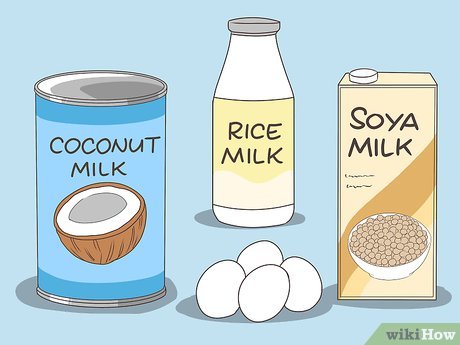Navigating Wellness: A Comprehensive Guide on How to Reduce Histamine in Your Body

Introduction:
Histamine is a naturally occurring compound in the body that plays a crucial role in immune response and regulation of various physiological functions. However, an excess of histamine, whether due to genetics, dietary choices, or other factors, can lead to histamine intolerance or sensitivity. This condition can manifest in various symptoms such as headaches, skin issues, gastrointestinal problems, and more. In this extensive guide, we will explore the intricacies of histamine intolerance and provide comprehensive strategies on how to reduce histamine levels in your body, fostering a path towards improved well-being.
Understanding Histamine Intolerance:
Histamine intolerance occurs when the body’s ability to break down histamine is compromised, leading to an accumulation of this compound in the bloodstream. This can result from a deficiency of the enzyme diamine oxidase (DAO), responsible for breaking down histamine in the digestive tract, or due to an overproduction of histamine within the body.
Identifying Histamine-Rich Foods:
Reducing histamine levels begins with a conscious effort to identify and limit the consumption of histamine-rich foods. These include:
- Fermented Foods: Fermented foods like sauerkraut, kimchi, yogurt, and kefir can be high in histamine.
- Aged Cheeses: Parmesan, cheddar, and other aged cheeses tend to have higher histamine levels.
- Processed Meats: Bacon, salami, and other processed meats often contain elevated levels of histamine.
- Alcohol: Certain alcoholic beverages, particularly red wine, beer, and champagne, can contribute to histamine levels.
- Vinegar and Vinegar-Containing Foods: Foods and condiments containing vinegar, such as mustard and ketchup, may increase histamine.
- Canned and Processed Foods: Canned vegetables, processed snacks, and ready-made meals may contain added histamine.
Implementing a Low-Histamine Diet:
Transitioning to a low-histamine diet involves strategic dietary choices and mindful meal planning. Consider the following guidelines:
- Fresh and Well-Cooked Foods: Prioritize fresh, unprocessed foods and opt for cooking methods like grilling, baking, or steaming.
- Selecting Low-Histamine Alternatives: Substitute high-histamine foods with lower-histamine alternatives. For instance, choose fresh poultry over processed meats.
- Limiting Certain Vegetables: While vegetables are generally healthy, some high-histamine options like tomatoes, eggplants, and spinach might need moderation.
- Choosing Fresh Fruits: Opt for fresh fruits over dried or canned options, as the latter may have higher histamine levels.
- Exploring Low-Histamine Grains: Incorporate grains such as rice, quinoa, and oats, which tend to have lower histamine content.
Supporting DAO Production:
The enzyme diamine oxidase (DAO) plays a pivotal role in breaking down histamine in the digestive system. Enhancing DAO production can be beneficial for individuals with histamine intolerance:
- Quercetin-Rich Foods: Quercetin is a natural compound found in foods like onions, apples, and berries, known to support DAO activity.
- Vitamin C: Incorporate vitamin C-rich foods such as citrus fruits, bell peppers, and strawberries to boost DAO function.
- Probiotics: A healthy gut microbiome is crucial for overall well-being. Consider probiotic-rich foods or supplements to support gut health.
Managing Stress and Lifestyle Factors:
Stress can exacerbate histamine intolerance, so adopting stress-management techniques is essential:
- Mindfulness and Relaxation: Practice mindfulness, meditation, or deep breathing exercises to reduce stress levels.
- Adequate Sleep: Prioritize quality sleep, as insufficient rest can contribute to increased histamine levels.
- Regular Exercise: Engage in moderate exercise, as physical activity can positively impact stress levels and overall health.
Supplements to Consider:
Certain supplements may aid in reducing histamine levels or alleviating symptoms of histamine intolerance:
- DAO Supplements: Diamine oxidase supplements are available to support the breakdown of histamine in the digestive tract.
- Quercetin Supplements: Quercetin supplements can be considered to enhance DAO activity and reduce histamine levels.
- Vitamin C Supplements: If dietary sources are insufficient, vitamin C supplements may support overall health and DAO function.
Seeking Professional Guidance:
Individuals with persistent or severe symptoms of histamine intolerance should consult healthcare professionals, including allergists, dietitians, or gastroenterologists. They can provide personalized guidance, conduct relevant tests, and tailor interventions to address specific needs.
Conclusion:
Reducing histamine in the body involves a multi-faceted approach, encompassing dietary choices, lifestyle modifications, and, in some cases, supplementation. By understanding histamine intolerance, making informed food choices, and adopting supportive lifestyle practices, individuals can effectively manage symptoms and pave the way for improved well-being. It’s crucial to approach this journey with patience and seek professional guidance when needed to ensure a holistic and sustainable approach to reducing histamine levels in the body.




